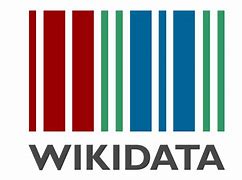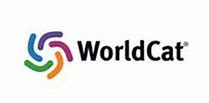A Filosofia peirciana do mais que humano, seus precursores e seus herdeiros
DOI:
https://doi.org/10.23925/2316-5278.2025v26i1:e70334Palabras clave:
Cultura, Mais Que Humano, Não-Humano, Natureza, Ontologia Orientada a Objetos, PeirceResumen
O artigo discute os aspectos mais que humanos ou extra-humanos da filosofia semiótica de Charles S. Peirce, contextualiza-a na história das ideias (Aristóteles, os medievais, Montaigne, Descartes), examina seus fundamentos, suas sintonias e diferenças em relação às tendências do século XXI nos estudos culturais e filosóficos, no contexto das dicotomias e do antropocentrismo herdados da cultura ocidental, atualmente denunciados pelo pós-humanismo, estudos não-humanos, Ontologia Orientada a Objetos e pelo paradigma mais que humano.
Citas
ABRAM, D. Perception and Language in the More-Than-Human World. New York: Vintage e-Books, 1997.
BÖHME, G.Natürlich Natur: Über Natur im Zeitalter ihrer technischen Reproduzierbarkeit. Frankfurt/a. M.: Suhrkamp, 1992.
BOGOST, I. Alien Phenomenology, or, What it's like to be a thing. Minneapolis, MN: University of Minnesota Press, 2012.
BRYANT, L. R. The Democracy of Objects. London: Open Humanities Press, 2011.
COLLINS, R. W. What does it mean to be human, and not animal? Examining Montaigne’s literary persuasiveness in “Man is no better than the animals”. Sloth: A Journal of Emerging Voices in Human-Animal Studies, v. 4, n. 1, p 1-9. 2018. Disponível em: https://www.animalsandsociety.org/human-animal-studies/sloth/sloth-volume-4-no-1-winter-2018/. Acesso: 15 jul, 2024.
DOMENÈCH, M.; TIRADO, F.; GÓMEZ, L. A dobra: psicologia e subjetivação. In: SILVA, T. T. da (org.). Nunca fomos humanos: Nos rastros do sujeito, Belo Horizonte: Autêntica, 2001. p. 111-136.
EMMECHE, Claus. A semiotical reflection on biology, living systems and artificial life. Biology and Philosophy, v. 6, p. 325-340, 1991. https://doi.org/10.1007/BF00132235.
EMMECHE Claus; HOFFMEYER Jesper. From language to nature: The semiotic metaphor in biology. Semiotica, v. 84, n. 1/2, p. 1-42, 1991. https://doi.org/10.1515/semi.1991.84.1-2.1
EMMECHE, Claus; KULL, Kalevy. Towards a semiotic approach to biology. Life is the action of signs. London: Imperial Press, 2011.
GRUSIN, R. The Nonhuman Turn. Minneapolis, MN: Minnesota University Press, 2015.
HARMAN, G. Object-Oriented Ontology: A New Theory of Everything. London: Pelican, 2008.
HARMAN, G. Towards Speculative Realism: Essays and Lectures. Alresford: John Hunt Publishing, 2010.
HARAWAY, D. Simians, Cyborgs, and Women: The Reinvention of Nature. New York: Routledge, 1991.
HAYLES, N. K. How We Became Posthuman: Virtual Bodies in Cybernetics, Literature, and Informatics. Chicago, IL: University of Chicago Press, 1999.
KOHN, Eduardo. How forests think: Toward an anthropology beyond the human. Berkeley: University of California Press, 2013.
LATOUR, B. La clef berlinoise: ou inscrire dans la nature des choses. Alliage: Culture – Science – Technique, v. 6, p. 4-15, 1990.
LATOUR, B. On actor-network theory: A few clarifications. Soziale Welt, v. 47, n. 4, p. 369-381, 1996.
LEACH, E. 1964. Anthropological aspects of language: Animal categories and verbal abuse. In: LENNEBERG, E. (ed.). New Directions in the Study of Language. Cambridge, MA: MIT Press, 1964. p. 23-63.
MANCUSO, Stefano. Revolução das plantas um novo modelo para o futuro, Regina Silva (trad.). São Paulo: Ubu, 2019.
MARAN, T. Ecosemiotics: The Study of Signs in Changing Ecologies. Cambridge: Cambridge University Press, 2000.
NÖTH. W. Handbuch der Semiotik, 2 ed. rev. edn. Stuttgart: Metzler, 2000.
NÖTH. W. Paradigmen des Dualismus, Kultur vs. Natur und Ansätze zu dessen Dekonstruktion. In: HELDUSER, U.; SCHWIETRING, T. Kultur und ihre Wissenschaft. Konstanz: UVK, 2002a. p. 49-68.
NÖTH. W. Semiotic machines. Cybernetics & Human Knowing, v. 9, n. 1, p. 5-22, 2002b.
NÖTH. W. On the instrumentality and semiotic agency of signs, tools, and intelligent machines. Cybernetics & Human Knowing, v. 16, n. 3-4, p. 11-36, 2009.
NÖTH. W. Levi R. Bryant’s universe perfused with machines. Language and Semiotic Studies (Suzhou), v. 1, n. 2, p. 113-120, 2015. https://doi.org/10.1515/lass-2015-010206.
NÖTH, W. Varieties of nonhuman semiosis. In: QUARESMA, A. (ed.). Artificial Intelligences: Essays on Inorganic and Nonbiological Systems, 179-192. Madrid: Global Knowledge Academics, 2018.
NÖTH. W. Peirce on the continuity between human and nonhuman minds. In MIDDELHOFF, F. et al. (eds.). Texts, Animals, Environments: Zoopoetics and Ecopoetics, (= Animal Studies 3). Freiburg: Rombach, 2019. p. 139-155.
NÖTH, W. Peirce’s legacy for contemporary consciousness studies, the emergence of consciousness from qualia, and its evanescence in habits. Semiotica, v. 243, p. 49-103, 2021. https://doi.org/10.1515/sem-2021-0117.
NÖTH, W.; KULL, K. (eds.). The Semiotics of Nature. Sign Systems Studies, v. 29, n. 1, 2021.
OELZE, A. Animal Rationality: Later Medieval Theories 1250-1350. Leiden: Brill, 2018.
OLIVEIRA, Jelson; SOUZA, Gregori de (orgs.). Formas de vida. Humana, extra-humana, pós-humana. Curitiba: ed. Potter, 2024.
PARMENTIER, Richard J. Sign’s place in medias res: Peirce’s concept of semiotic mediation. In: MERTZ, E.; PARMENTIER, R. J. (eds.). Semiotic Mediation. Orlando: Academic Press, 1985. p. 23-48.
PEIRCE, C. S. Collected Papers. vols. 1-6, C. Hartshorne and P. Weiss (eds.). vols. 7-8, Arthur W. Burks (ed.). Cambridge, MA: Harvard UP, 1931-1958, (citado CP.).
PEIRCE, C. S. The Charles S. Peirce Papers. [30 reels, 3rd microfilm edition.] Cambridge, MA: The Houghton Library, Harvard University, Microreproduction Service, 1963–1966. Microfilm, 1931-1966, (citado MS.).
PEIRCE, C. S. Writings of C. S. Peirce. A chronological edition, Max Fisch et al. (eds.). Vols. 1-6. Bloomington: Indiana University Press, 1982-. (Citado W).
PETRUCCI, Maria. O Antropoceno. Da crise climática à crise do pensamento. Porto Alegre: Contratempo, 2024.
ROSE, Nikolas. Inventando nossos eus. In: Thomas Tadeu da Silva (org.). Nunca fomos humanos. Nos rastros do sujeito. Belo Horizonte: Autêntica, 2001. p. 137-204.
POLLAN, Michael. O dilema do onívoro. Trad. Cláudio Figueiredo. Rio de Janeiro: Editora Intrínseca Ltda., 2006.
SANTAELLA, L. Peirce’s broad concept of mind. European Journal for Semiotic Studies, v. 6, n. 3-4, p. 399–411, 1994.
SANTAELLA, L. Peirce and biology. Semiótica, Biosemiotics Especial Issue, v. 127, n. 1-4, p. 5-22, 1999.
SANTAELLA, L. Culturas e artes do pós-humano: Da cultura das mídias à cibercultura. São Paulo: Paulus, 2003.
SANTAELLA, L. O método anticartesiano de C. S. Peirce. São Paulo: Editora UNESP, 2004.
SANTAELLA, L. A continuidade mente-matéria em C. S. Peirce. In Lucia Santaella, org. Desafíos humanos no contemporáneo. São Paulo: Estação das Letras e Cores, p. 33-46, 2019a.
SANTAELLA, L. O conceito ampliado da mente em C. S. Peirce. Cognitio, São Paulo, v. 20, n. 2, p. 392-403, 2019b. https://doi.org/10.23925/2316-5278.2019v20i2p392-403.
SAUSSURE, F. de. Cours de linguistique générale. Bally e Sechehaye (eds.). 25a. ed. Paris: Payot, 1986.
SHAVIRO, S. The universe of things. Theory and Event, v. 14, n. 3, p. 1-17, 2011. https://doi.org/10.1353/tae.2011.0027.
SILVA, Tomaz Tadeu da. Nós, ciborgues: o corpo elétrico e a dissolução do humano. In: SILVA, Tomaz Tadeu da (org.). Antropologia do ciborgue. Belo Horizonte: Autêntica, 2000. p. 9-18.
TYE, M. Tense Bees and Shell-Shocked Crabs: Are Animals Conscious? Oxford: Oxford University Press, 2017.
VARTANIAN, A. Man-machine from the Greeks to the computer. In: WIENER, P. (ed.). Dictionary of the History of Ideas, vol. 3, New York: Scribner, 1973. p. 131-146.
WILD, M. Die anthropologische Differenz: Der Geist der Tiere in der frühen Neuzeit bei Montaigne, Descartes und Hume. Berlin: de Gruyter, 2006.
WOHLLEBEN, Peter. The hidden life of trees. What they feel, how they communicate. Discoveries from a secret world. Trad. Jane Billinghurst. Vancouver/Berkeley: Greystone Books, 2016.
Descargas
Publicado
Cómo citar
Número
Sección
Licencia
Derechos de autor 2025 http://creativecommons.org/licenses/by/4.0/

Esta obra está bajo una licencia internacional Creative Commons Atribución 4.0.









